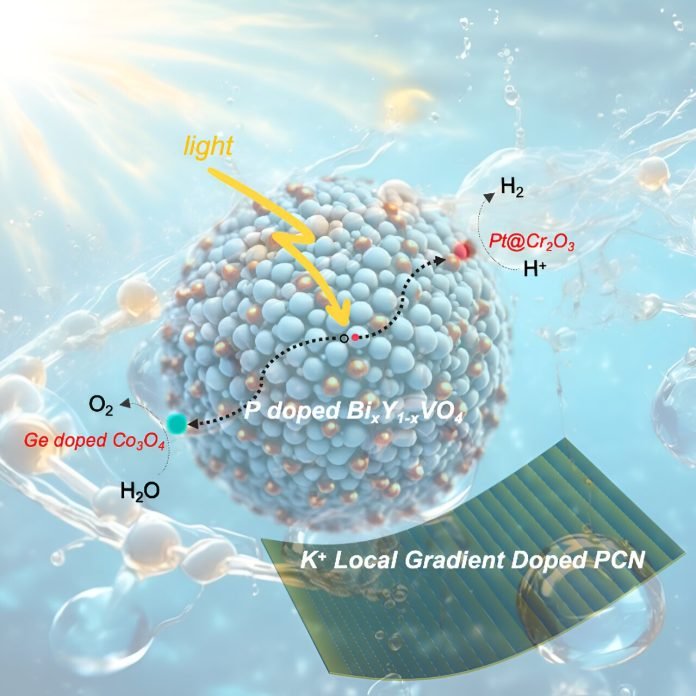
Researchers have achieved a major breakthrough in using sunlight to split water molecules, a process crucial for generating clean energy.
This method, known as photocatalytic water splitting, uses special materials called photocatalysts to harness light energy and kick-start the reaction.
During photocatalytic water splitting, when light strikes the photocatalyst, it creates pairs of charged particles called electron-hole pairs.
These excited electrons can help convert water into oxygen and hydrogen, a clean fuel source.
However, this process faces challenges like low efficiency and difficulty absorbing certain types of light, limiting its effectiveness.
To overcome these hurdles, scientists are exploring various innovative strategies such as modifying the photocatalyst with different elements, altering its structure at the nanoscale, and using additional catalysts to enhance its performance.
One promising approach involves doping, where small amounts of other elements are added to the photocatalyst material.
For example, nitrogen doping in titanium dioxide (TiO2) has been shown to widen the range of light it can absorb, improving its ability to split water molecules.
Recently, a team led by Prof. Wenfeng Shangguan at Shanghai Jiao Tong University has made significant strides by integrating various doping techniques into bismuth-based composite oxides.
Their method, called Selected Local Gradient Doping, carefully controls how these elements are introduced into the material, enhancing its ability to conduct electricity and efficiently split water molecules under visible light.
Their research, detailed in the Chinese Journal of Catalysis, focuses on optimizing the energy band structure and microstructure of these materials. By doping rare earth elements into bismuth-based oxides, they aim to boost the efficiency of solar energy conversion for clean fuel production.
This innovative approach not only addresses current limitations but also opens new possibilities for developing advanced materials that could revolutionize solar energy technology.
As researchers continue to refine these techniques, the future looks brighter for harnessing sunlight to power our homes and cities with sustainable energy solutions.



